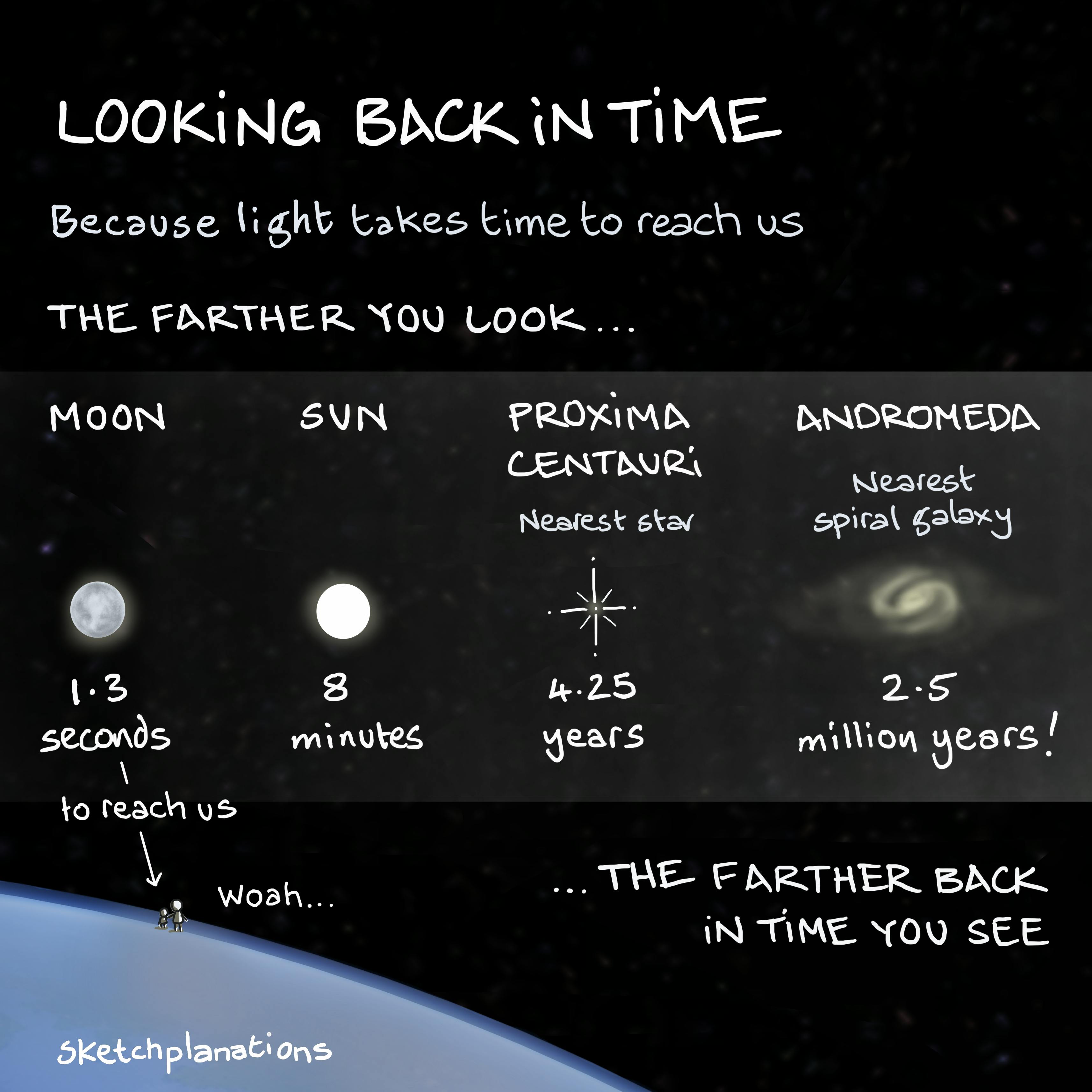Looking Back in Time: The Speed of Light and the Night Sky

- Prints
- Copied!
👇 Get new sketches each week
The speed of light is a mighty ~300,000 km/s. But even at that speed, because the distances in space are so vast, sometimes it has to settle in for the ride. When we see the light from a distant star or galaxy, we're not seeing it as it is now—we're seeing it as it was when the light first left on its journey to Earth.
Why Looking at Stars Is Like Looking into the Past
When you hear a thunderclap after seeing lightning, you know that you're hearing something that happened some time ago. Looking into the night sky is similar—except here, it's light that causes the delay, not sound.
Take the moon, for instance. At a little under 400,000 km away, light that has reflected off the moon takes around 1.3 seconds to reach us.
But the sun is much further. At around 150 million km away, it takes a little over 8 minutes for light from the sun to reach us. So what we are seeing at the sun, for example, a solar flare, happened 8 minutes ago. (The distance from the sun to Earth is called 1 AU - Astronomical Unit).
As soon as you look at more distant objects, you realise that looking up at the night sky is looking way back in time. To measure these distances, we use light years—the distance light travels in one year. So, the number of light years an object is away from us is how far back in time we are seeing.
Our nearest star system is Proxima Centauri at around 4.24 light-years away. What we see on Proxima Centauri happened over four years ago.
Here are a few stars you can spot at night (in the northern hemisphere) and how long ago the light from each started its journey:
- Polaris (the North Star): 433 years ago, around 1590 AD
- Pleiades (Seven Sisters): 444 years ago, around 1580 AD
- Betelgeuse: 548 years ago, around 1480 AD
Put another way, if you were in Betelgeuse right now, you’d be looking at light from our sun around the time Leonardo da Vinci was pioneering sketchplanations.
The Andromeda Galaxy, the nearest spiral galaxy to our Milky Way, is a staggering 2.5 million light-years away. This means the light we see from Andromeda today set off on its journey 2.5 million years ago — around the beginning of the Pleistocene, the most recent ice age era, when early mammoths and sabre-toothed cats were emerging.
Seeing the Early Universe
As we look with increasingly larger telescopes at more distant objects, scientists gather clues about the Universe's earliest days. The farther we look, the farther back in time we see. In 2024, the James Webb telescope detected a galaxy so far away that the light we see started travelling when the Universe was just 2% of its current age .
So, as you look up in the sky, it's also like looking at a map of different times. Crazy.
Related Ideas to Looking Back in Time
- Find the North Star
- Use the Southern Cross to find south
- Solar system planets: how big is the solar system?
- Redshift
- Orbit
- Point Nemo
- Antipodes
- Super moon
- The Overview effect
- Comets, Asteroids, Meteors, and Meteorites: know your space objects
- The Flash-to-Bang Method for estimating the distance of lightning
- The Doppler effect

